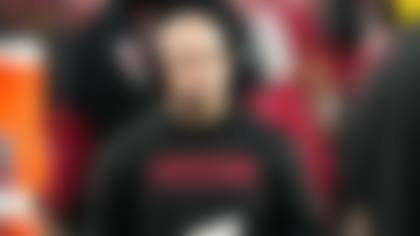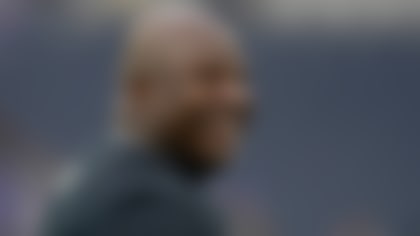INDIANAPOLIS -- NFL doctors and trainers will use standardized sideline testing next season to diagnose concussions, the league's latest move in a national debate over implementing stronger policies toward head injuries.
On Friday, league officials are scheduled to unveil new guidelines by which all 32 teams use the same questions for players' baseline tests. The policy also would add a balance test to the list of other tests already used.
Previously, teams used a variety of questions on the baseline tests, which players must pass before returning to action, and balance testing was not part of the evaluation process.
"A lot of people weren't doing the balance testing, which we think is useful, and the baseline information that people gather during the mini-camps, not everyone was doing as much as they could have been doing," Dr. Margot Putukian told The Associated Press. "For instance, all the teams were asking questions, but they might not have been asking the same questions."
Putukian, the director of athletic medicine at Princeton University and chairwoman of the league's subcommittee on return-to-play issues, said surveys conducted by the league showed not all 32 teams used the same procedures.
In some cases, that might explain why players left games briefly last season, then returned, only to be pulled out later with concussions. It also can cause complications determining how many concussions a player has had when he moves from team to team.
The standardized exam has three components: cognitive, with questions for the player; neurological, with the athletic trainer or doctor examining the player's eye movement and doing hands-on physical checks; and the balance test.
Twenty-four symptoms will be listed, including confusion, headaches and trouble sleeping.
The goal is to protect players from potentially debilitating head injuries and to provide NFL teams with more accurate information about the number of concussions players incur. It also will help the league gather more accurate data to study long-term effects of concussions.
"I think we're diagnosing them better and players are more willing to come forward," Putukian said. "My job is to monitor and gather information and see what happens when someone has an initial injury, how long it takes them to come back, the types of concussions they have, and to make sure that everyone is on the same page."
Putukian described the new policy as "recommended" rather than mandated, but doctors who must deal with these types of injuries still call it progress.
Dr. Henry Feuer, a neurosurgeon with Methodist Sports Medicine who works with the Indianapolis Colts, believes it will have a trickle-down effect for college and high school programs, which tend to have fewer doctors and trainers testing for concussions.
"Can we be perfect? No. But we want to get as close to perfect as we can," Feuer said. "We're trying to set an example for every level of football. That is one of our goals."
Player safety is one of the hottest topics at this week's annual NFL scouting combine.
On Thursday, everyone from team owners to draft prospects took questions about head injuries, and a group of NFL players also spent more than two hours discussing player safety in front of the competition committee.
"The main focus has been on player safety and how to cut down on contact to the head," Giants co-owner John Mara said. "It's a challenge. (The players') position is that it happens so fast, and our position is that you have to have a lower aiming point."
Players understand the conundrum.
"We're all teammates, in a sense," Brackett said. "I believe there is a happy medium, and there has to be some research done to find out where that area is so both sides can come to an agreement."
Feuer believes the answer is simpler.
"I think because the equipment is so good, there's a lot of launching of bodies going on rather [than] tackle football," Feuer said. "Instead of trying to tackle, they fling their bodies at guys. That's not tackle football."
Both doctors insisted part of the responsibility lies with players, who they say must be honest about the symptoms they're having. Feuer said in recent years he's seen more players come forward with concerns, something he hopes will continue.
But the league isn't taking any chances. They want doctors to make the ultimate call -- and making them all off of the same card.
"The hardest thing about taking care of a concussion is its evaluation, its assessment, because it's not like you have a bone sticking out of the skin or something," Putukian said. "So it's not always easy to diagnose, and we just want everybody doing it the same way."
For more on NFL Health and Safety, visit http://www.NFLHealthandSafety.com.
Copyright 2011 by The Associated Press



